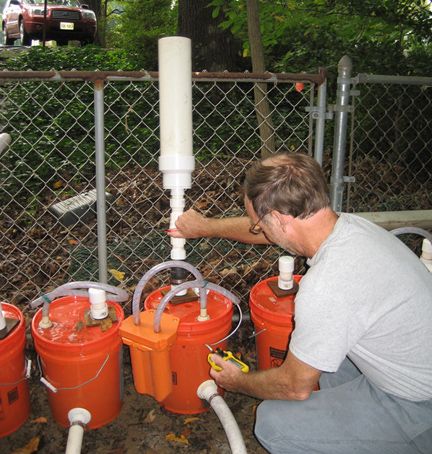We’ve had a lot of fun with toilets and boat sanitation systems, most recently with an extensive new reports on desiccating heads and combatting urine odor. And after my experience last weekend while hunting down odors on our new project boat the 1971 S&S designed Yankee 30 Opal, I thought I’d revisit some of our findings here. The good news is that a stinky head is curable. The better news is that it need not cost you an arm and a leg. In many cases, a change in maintenance habits and less than $20 can put you on the path to deep breathing again.
What follows is just a brief capsule of our recent findings. For more extensive reading, I recommend checking out the full versions of the articles cited below, or one (or both) of the following sources: the 2nd Edition of Peggie Hall’s Get Rid of Boat Odors or Volume II of our two-part eBook on marine sanitation.
Odor control doesn’t necessarily start at the marine head (hoses are often the chief culprit), but that seems like the logical place to start. A big step toward reducing head odors is to use fresh water for flushing. Salt water is alive with microscopic critters that add to the odor problem when they die and decay in your holding tank. That is not practical for most long-term cruising boats, but the owner of a big boat with extra tankage can get by with a freshwater flush, particularly if he uses a vacuum-flush toilet system like those we tested.
The newer electric toilets that we tested also cut down on water usage, and just as importantly, they help clear the hose better with their high-velocity flushes. These heads use a high-speed centrifugal Vortex pump, which has a unique convex rotor and a funnel-shaped casing or volute that converts kinetic energy into pressure. Akin to a common bilge pump, the centrifugal pump has a set of curved blades on a rotor. The fast-spinning rotor creates a change in pressure that can quickly push a slug of liquid through the system, using very little water and making far less noise than earlier renditions.
Whether you use fresh or salt water, you will still want to control the chemistry in your holding tank. We’ve tested several holding tank additives that are effective at controlling odor. Among the products we tested were a few that seemed to help control odors right at the head, and these products would also be effective for portable toilets.
However, you have to be wary about what you add. Our recent test of joker valves-the essential valve that prevents backflow from the holding tank and helps create the vacuum for flushing-demonstrated that some products used for cleaning, deodorizing, and winterizing heads can shorten the valve’s life. If you’re serious about controlling head odors, you will watch what you put in your head and replace this valve every year. It is the most important valve in the system.
But to get to the bottom of most head odor problems on older boats, you need to look at the plumbing. Head odors can easily seep through cheap hoses. We conducted a series of tests on two vital hoses— the marine sanitation discharge hose between the head and the holding tank, and the vent hose between the holding tank and the through-hull vent fitting. One of my previous blog posts describes some tips for eliminating hose odors. And finally, we tested holding tanks and holding tank sensors, those trouble-prone devices that tell us when its time for a pumpout.
As it turned out, the problem aboard Opal was not due to any specific component but was caused by a design flaw. Opal initial came with an onboard treatment system and no holding tank, so the holding tank and associated plumbing was retrofitted by a previous owner. The owner located the holding tank vent in the most convenient place, high above the waterline on the hull side nearest the tank. The vent location was also upwind of the forward hatch, so that any associate odors not only wafted over the boat at anchor, but also funneled into the v-berth hatch. There was no vent filter. I plan to install a filter and move the vent further aft, although I’ve also begun looking at composting toilets—which are, as technical editor Drew Frye, points out actually properly called desiccating heads.
Too often, sailors accept head odors as an inevitable side-effect of having a holding tank. But you can escape the stink by downloading Marine Sanitation: Marine Toilets today!










































